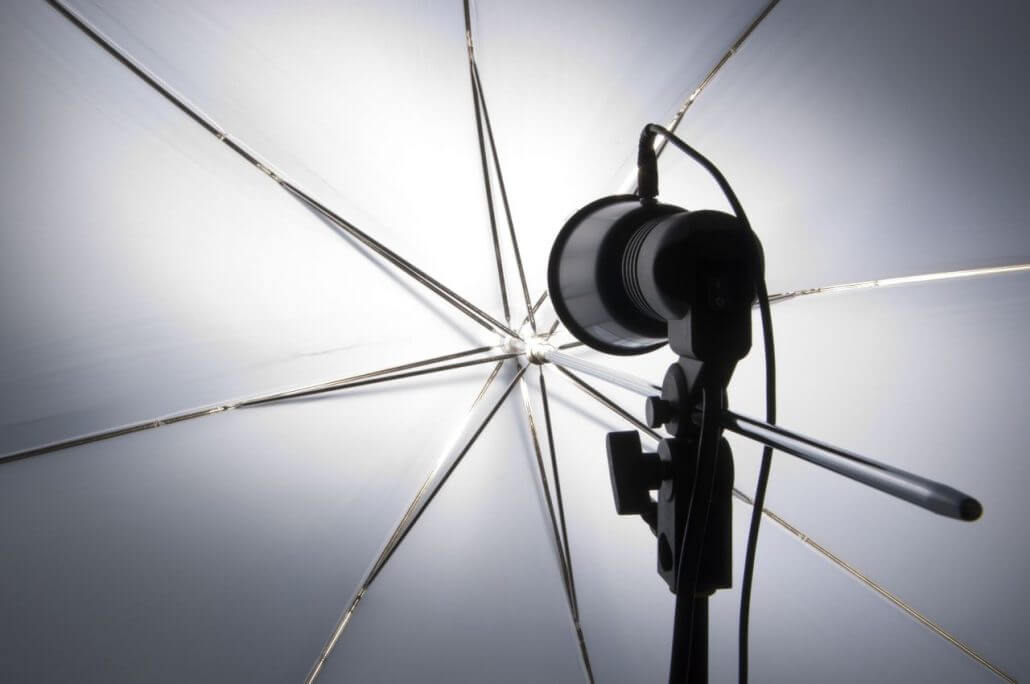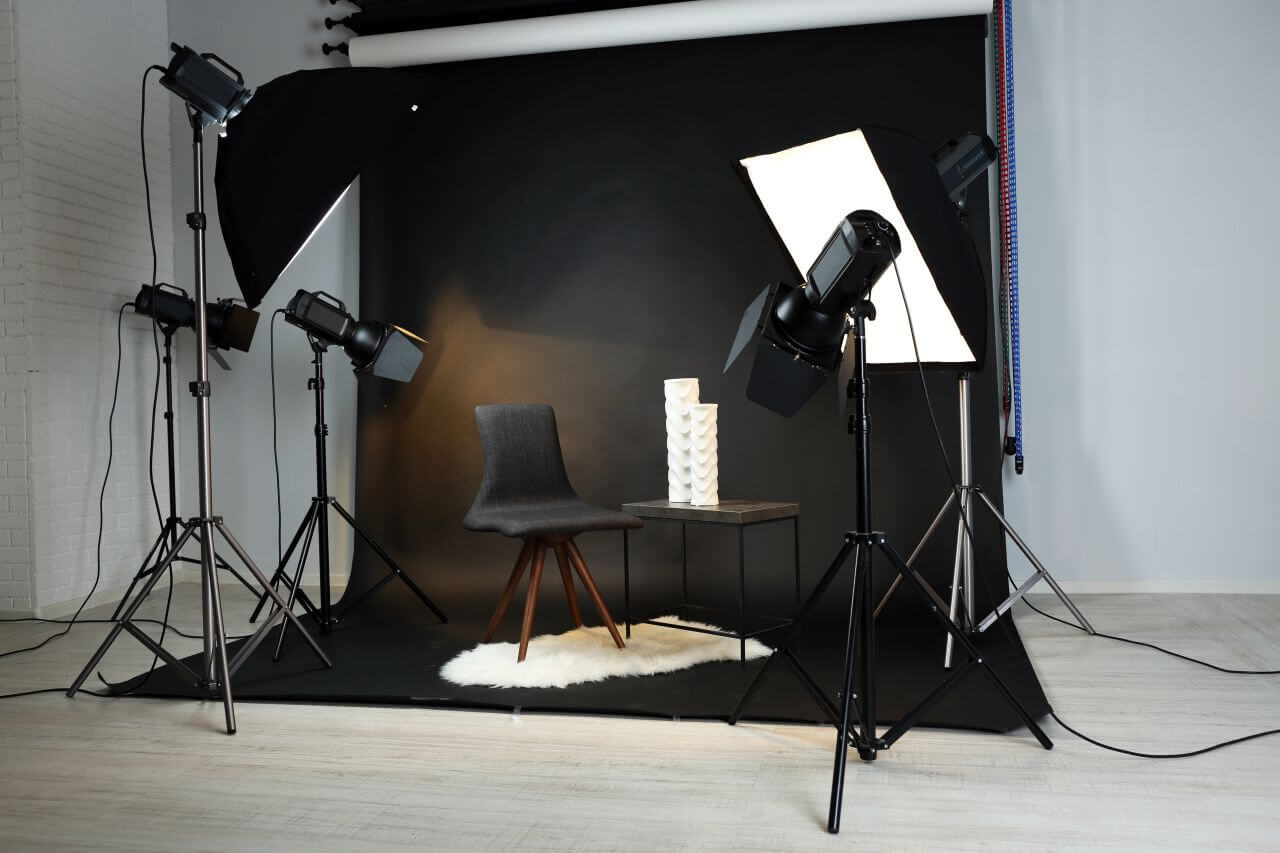
Studio Lights: A Comparison of Different Types of Continuous Lights
Optimal lighting plays an important role in successful and impressive photography. Whether you need a flash or continuous lighting, will depend on your subject, the setting and the effect you wish to achieve. Both types of lighting have their advantages and disadvantages. However, continuous lighting is becoming increasingly popular in studio photography, as modern lighting technology can be used to the photographer’s advantage. In this article, we will introduce you to different types of continuous studio lighting and explain their advantages and disadvantages. We will also show you how continuous studio lighting compares to a flash. In addition, we will give you an overview of what you should bear in mind when purchasing studio lights.
When it comes to studio lights, there are different designs available, and their area of application differs too. Halogen bulbs, HMI bulbs and LEDs are mainly used as light sources for most lamps. They differ in their brightness, colour temperature, light diffusion/range, if they are dimmable and how much heat they generate.
Photography Lighting: Halogen Lamps
Halogen lamps are a popular choice. They are an inexpensive option and are great for photography beginners who would like to experiment with continuous lighting. They are bright, stable, and very flexible due to their twistable brackets. Halogen lamps give off a warm light, which is several thousand Kelvin below the value for daylight. To put this into context: daylight has a value of around 5777 Kelvin. However, this can be relatively well controlled by using RAW images and white balance.
One disadvantage of halogen lamps is that they generate a lot of heat. Therefore, when buying a halogen lamp make sure that the housing has plastic handles. If your lamp does not have plastic handles or a plastic housing that insulates the heat, you won’t be able to reposition your lamp after it has been on for a while. Furthermore, because of the heat it generates, it is important not to place the spotlights on non-flammable flooring. Thus, you will not be able to place this type of lamp on a carpet or near highly flammable objects.
Construction spotlights are also halogen lamps. There is a wide range available and they are usually comparatively inexpensive. However, cheaper models do not have suitable handles and lack the appropriate holes and fittings for attaching diffusers or foil. Nevertheless, there are also high-quality models, which are suitable for using as a source of continuous indoor lighting.
Photography Lighting: HMI Lights
The abbreviation HMI stands for metal halide lamp. An HMI light mimics daylight and is mainly used in television and film studios. HMI lights have a lot of advantages. They do not flicker, they generate less heat and offer an intensely bright light. Furthermore, they are also better insulated and don’t use as much electricity in comparison to halogen spotlights.
You also have the option of combining artificial light with daylight, as they have a value of 6500 Kelvin, which is higher than the value for daylight. This type of light source remains particularly stable throughout its lifespan in terms of light temperature. Another advantage is that one can judge what effect the lighting will have before you take a photo. However, after switching on an HMI light, it will need a few minutes to warm up to a desirable colour.
Aside from the many advantages of this type of lighting, HMI lamps have two distinct disadvantages: for one, they are quite expensive and secondly, frequent use will shorten their lifespan.

Photography Lighting: Continuous illumination with LEDs
Due to their many positive characteristics, LED lamps as continuous studio lights have become very popular. LED lights do not flicker and they are easier to adapt to studio conditions. This technology is also easy to use for amateurs. Another advantage of LEDs is their mobility because these continuous lights are also available in relatively small, handy sizes. In addition, they can be operated with a rechargeable battery. This is a feature that neither the halogen nor the HMI lights have. Both these types of lighting need a power source which means that they cannot be used everywhere.
Bicolour LEDs allow you to switch continuously between daylight and artificial light. Some of the lights are even dimmable.
Nowadays, LED lights are also available as large surface lights. As a result, they can illuminate a large area and diffuse light without any extra equipment. Newer models provide a soft light and diffuse shadows. Thus, in some cases, you won’t even need to use a softbox or an umbrella.
Another positive aspect is that an LED light generates very little heat, which means that filter materials such as fabric, paper and foils can be used without any issues. In addition to the settings already mentioned, some models offer a selection of colour bands within a colour spectrum of 3000 to 6000 Kelvin. The ability to adjust the colour temperature makes it easier to create lighting effects which are difficult to achieve with other continuous lighting sources or a flash.
LED lights also have disadvantages. On the one hand, LED lights can only be used over short distances. In addition, they cause a high edge drop outside the central area of illumination. However, this can also be used intentionally as an effect.
An LED light generally does not use a lot of electricity, but quite often you will need several of them to light up an area, which can then increase your electricity consumption in comparison to other types of continuous lights. As versatile as a LED light is a lot of models do not shine as brightly as an HMI light. Another major problem is the inhomogeneous colour spectrum of a single coloured LED, which does not produce a clean white light. This is why bicolour technology is needed for studio photography, where two existing white tones can be mixed manually.
Furthermore, it is difficult to illuminate large areas with LEDs because the beam angle of LEDs without a diffuser is relatively small. Especially with smaller LEDs as the light can be very harsh without the use of a diffuser and even with a diffuser it is usually harsher than when using a flash. The light efficiency is also lower than other continuous lights, which means that the LEDs have to be placed very close to the lens. However, this hardly affects the photographer, as the LEDs only generate a small amount of heat.
There isn’t much price difference in comparison to professional halogen floodlights. The lifespan on the other hand is significantly longer and the maintenance costs are lower.
Photographer Chris Gonz from Plauen in Germany also uses LED lights for his work and he explains why: "I do a lot of portrait photography where I sometimes can't use flash, for example, in public spaces, bars and clubs. Here I like to use LED panels, preferably battery powered. Their lightweight design makes them very handy and extremely practical. Also, the colour temperature of many models can be adjusted, which makes it easy to adapt them to the ambient light. The directional effect of continuous light is particularly easy for beginners, as it is easier to see how the light falls onto the subject and thus have perfect control over the subsequent image. Furthermore, the panels are also suitable for short video sequences."
Conclusion: Choose Studio Lights to Suit Your Needs
Each light source offers both advantages and disadvantages. The halogen light has an orange light and it produces a lot of heat, which is a disadvantage. An HMI light is quite impressive thanks to its light quality, whereas a LED light is a great choice as it is easy to adjust and transport. LEDs also have a good lifespan in comparison to an HMI light.
Tip
A lot of work and passion goes into getting the perfect shot. To do your favourite images justice, it is best to have them printed on high-quality photo paper. Furthermore, you can collect your most impressive photos in a photo book:
Design your own personal photo book